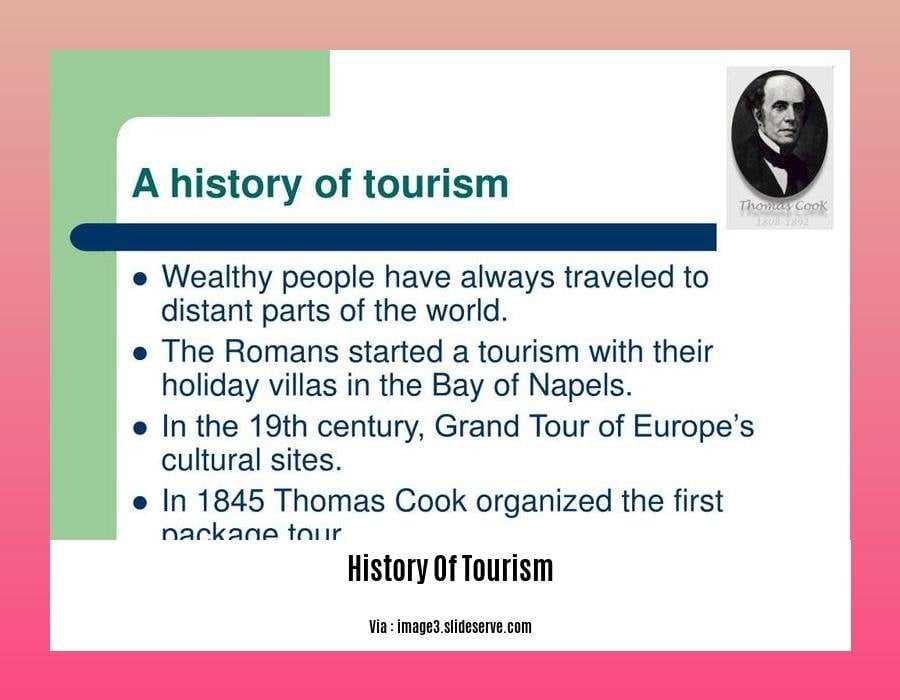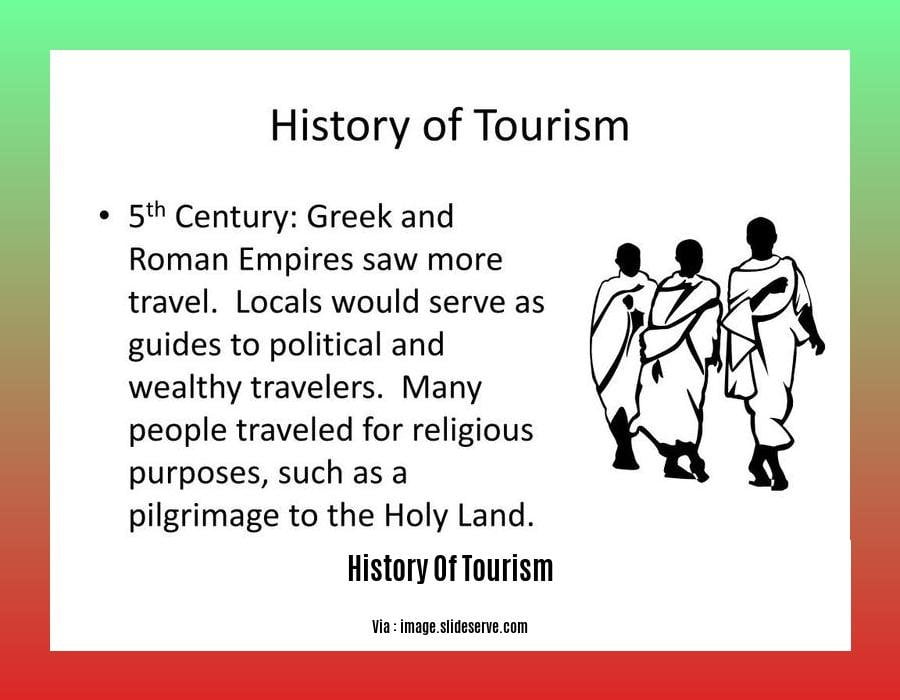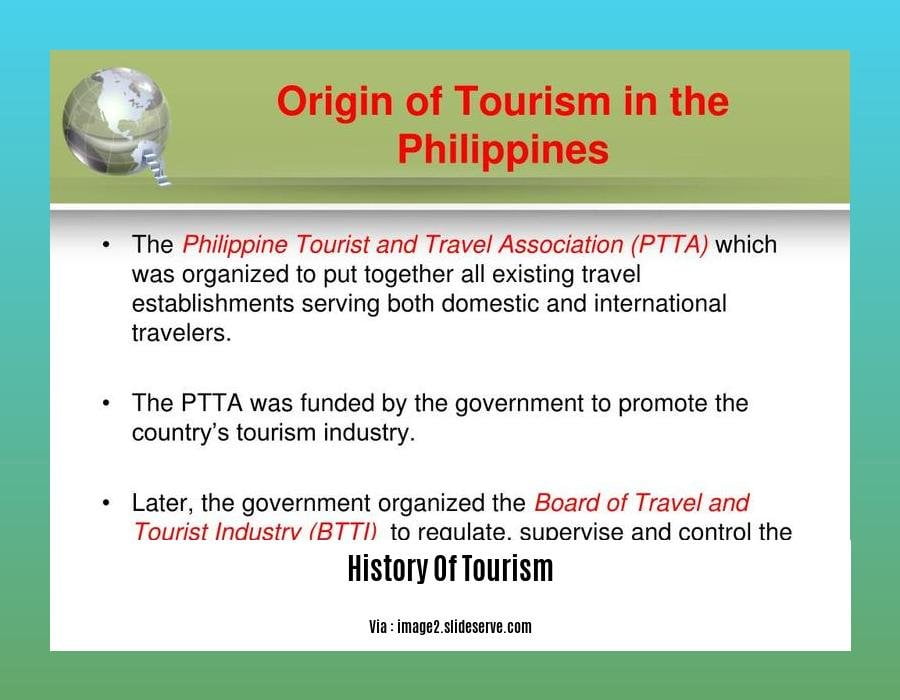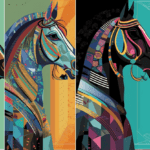Embark on “A Journey Through Time: The Fascinating History of Tourism” as we delve into the captivating narrative of human exploration and the evolution of travel from ancient pilgrimages to modern-day adventures.
Key Takeaways:
- Travel became a trend in the 17th century, especially among the wealthy.
- Pilgrimages were the main form of travel during the Middle Ages.
- Thomas Cook’s organized tours made travel more accessible in the 19th century.
- Tourism boomed in the 20th century due to advancements in transportation and hospitality.
- Tourism is now a global industry with various types and effects.
**History of Tourism**

The history of travel and tourism is a fascinating tale that spans centuries. Tourism has evolved profoundly over time, driven by societal transformations and technological advancements.
Origins and Early Forms
The roots of tourism can be traced back to the 17th century with the Grand Tour, an educational journey undertaken by wealthy Europeans. In the Middle Ages, religious tourism flourished as pilgrims embarked on journeys to holy sites.
19th Century Revolution
The 19th century marked a significant turning point with Thomas Cook introducing organized package holidays. This pioneering innovation made travel more accessible, leading to a surge in leisure tourism.
Transportation and Tourism
The 20th century witnessed a tourism explosion fueled by advancements in transportation, communication, and the hospitality industry. The advent of railroads, automobiles, and airplanes brought distant destinations within reach.
Global Phenomenon
In recent decades, tourism has evolved into a global phenomenon. It now encompasses a vast array of forms, from adventure tourism to ecotourism, catering to diverse interests and needs. The History of Tourism is a testament to human wanderlust and the transformative power of exploration.
Are you intrigued about the evolution of tourism? Delve into the history of the growth of tourism to unravel its fascinating journey.
Explore the burgeoning The Growth Of Tourism industry, a global phenomenon that has transformed economies and connected cultures.
Uncover the reasons behind the dominance of tourism as the primary industry in the Loess Bluffs Region by exploring Why Is Tourism The Major Industry In The Loess Bluffs Region.
Witness the remarkable expansion of the The Growth Of Tourism Industry, a testament to its resilience and adaptability in the face of changing global landscapes.
The Birth of Leisure Travel and the Grand Tour

Key Takeaways:
The birth of leisure travel can be traced back to the Grand Tour, a form of travel undertaken by wealthy Europeans from the 17th to 19th centuries.
The Grand Tour was primarily educational in nature, with travelers visiting cultural and historical sites to broaden their knowledge.
It also had a significant recreational element, as travelers enjoyed the opportunity to relax, explore, and experience different cultures.
The Grand Tour had a profound influence on the tourism industry, contributing to the development of travel writing, visual arts, architecture, and even fashion.
It also played a key role in the cultural exchange between different countries, as travelers brought back new ideas and customs from the places they visited.
The Grand Tour: A Cultural Phenomenon
The Grand Tour was a transformative experience for many who undertook it. It was a journey of self-discovery, cultural enrichment, and intellectual growth.
Travelers from across Europe embarked on the Grand Tour, eager to experience the wonders of the classical world and the Renaissance.
Their itinerary typically included visits to major cities such as Rome, Paris, Florence, and Venice, where they immersed themselves in art, architecture, and history.
A Catalyst for Social Change
The Grand Tour was not just a personal experience; it also had a profound impact on society. It contributed to the rise of a new class of wealthy and educated travelers who were eager to explore the world.
It also helped to break down cultural barriers and foster a greater appreciation for different ways of life.
The Grand Tour left a lasting legacy on the tourism industry. It paved the way for the development of modern leisure travel and helped to shape the way we perceive and experience the world.
Citation:
- The Grand Tour: A Key Phase in the History of Tourism
- The Grand Tour – the Most Important Time in the History of Tourism?
, commencing
The 20th Century and the Rise of Mass Tourism
The 20th century witnessed a remarkable surge in tourism, transforming it into a global phenomenon. This era ushered in the Golden Age of Mass Tourism, characterized by:
- Increased disposable income and leisure time
- Advancements in transportation and technology, notably jet travel and automobiles
- Post-war economic prosperity
- Changing social attitudes towards travel
Key Takeaways:
- Mass tourism led to a surge in travel and vacation experiences.
- Destinations focused on offering standardized and homogenized vacation experiences, emphasizing sun, sand, and sea.
- Tourism brought significant economic growth to destinations, creating jobs and infrastructure.
- Increased cultural exchange and understanding emerged due to tourism’s global reach.
- Environmental concerns and overtourism challenges arose as a result of mass tourism’s popularity.
Relevant URL Sources:
- Golden Age of Mass Tourism: Its History and Development
- What is the golden age of tourism?
This golden age has left a lasting impact on the tourism industry, shaping its practices and destinations to this day.












